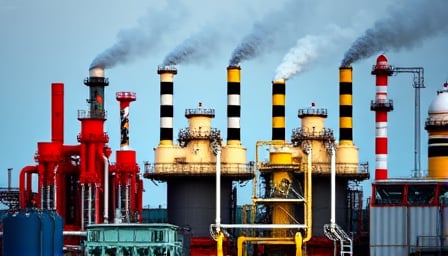Corporate Analysis: Brenntag SE amid Capital Investment Dynamics and Activist Influence
Brenntag SE, the German chemical trading and distribution leader, has recently attracted heightened attention from both financial analysts and activist investors. Goldman Sachs has reiterated a Buy recommendation and set a price target that reflects confidence in the company’s operational resilience and growth prospects. Concurrently, Artisan Partners has emerged as the largest shareholder, advocating for a structural split of the business into distinct entities. This development has propelled activist ownership to exceed 20 % of the company’s outstanding shares.
Capital Allocation in a High‑Yield Environment
The European equity market’s recent rally, bolstered by expectations that the U.S. Federal Reserve will ease interest rates, has had a moderate positive impact on Brenntag’s share price. Lower borrowing costs translate directly into cheaper capital for heavy‑industry players such as Brenntag, where long‑term assets—chemical storage facilities, bulk handling systems, and distribution logistics—constitute a substantial portion of balance sheet value.
From a capital expenditure perspective, the company is positioned to accelerate investments in:
- High‑efficiency bulk handling equipment (e.g., automated storage‑and‑retrieval systems) that reduce cycle times and lower labor intensity.
- Digital transformation platforms for real‑time inventory management and predictive maintenance, improving throughput and minimizing downtime.
- Sustainability‑oriented infrastructure (e.g., low‑carbon packaging solutions) that align with tightening European regulatory frameworks on greenhouse‑gas emissions.
These investments are expected to yield productivity gains in the range of 3–5 % annually, which, when compounded, can significantly enhance margin profiles over a 3–5 year horizon.
Technological Innovation in Heavy Industry
Brenntag’s strategic focus on technological innovation is evident in its adoption of advanced process control systems and IoT‑enabled equipment. The integration of machine‑learning algorithms into storage monitoring can detect anomalous temperature or pressure readings before they lead to product degradation or safety incidents. Additionally, the deployment of modular, prefabricated bulk containers allows for rapid scalability in response to market demand fluctuations.
These innovations not only improve operational efficiency but also enhance compliance with evolving EU regulatory mandates, such as the REACH chemical registration framework and the EU Packaging and Packaging Waste Directive. By proactively upgrading equipment and processes, Brenntag mitigates compliance risk while positioning itself as a value‑adding partner for its customers.
Supply Chain Resilience and External Drivers
The company’s distribution network spans more than 200 countries, and recent disruptions in global shipping lanes have underscored the importance of supply‑chain resilience. Brenntag’s response strategy includes:
- Diversification of logistics providers to reduce dependence on any single carrier network.
- Strategic reserve stockpiles for critical chemical feeds, ensuring continuity during port congestions or customs bottlenecks.
- Enhanced collaboration with upstream suppliers to synchronize production schedules and reduce inventory holding periods.
These measures directly influence the inventory turnover ratio—a key productivity metric for chemical distributors—and help maintain service levels during periods of heightened volatility.
Regulatory Landscape and Capital Spending Decisions
European regulatory shifts—particularly those concerning chemical safety and environmental impact—continue to shape Brenntag’s capital allocation choices. The EU Chemicals Strategy for Sustainability requires companies to reduce hazardous substance usage and improve end‑of‑life management. To comply, Brenntag is investing in:
- Advanced separation and recycling technologies for hazardous waste streams.
- Carbon‑capture and low‑energy storage solutions to meet the EU’s circular economy targets.
The regulatory burden is a cost driver but also an innovation catalyst, compelling the firm to adopt cleaner technologies that ultimately reduce long‑term operating expenses.
Impact of Activist Ownership
Artisan Partners’ push for a company split introduces a significant corporate governance dynamic. A split could:
- Unlock value by separating the high‑margin trading division from the lower‑margin logistics arm.
- Improve capital efficiency, allowing each entity to tailor its investment strategy to specific risk‑reward profiles.
- Enhance transparency for investors, potentially lowering the cost of capital.
However, the process will require meticulous structural engineering of the organization’s financial and operational systems, including the realignment of supply‑chain contracts and the re‑allocation of shared services. The success of this initiative will depend on the company’s ability to manage transition costs and preserve operational continuity.
Conclusion
Brenntag SE is navigating a complex landscape marked by favorable financial conditions, escalating activist pressure, and evolving regulatory demands. Its strategic emphasis on technological upgrades, productivity optimization, and supply‑chain resilience positions the company to capitalize on capital‑intensive opportunities while mitigating risk. The forthcoming decisions regarding structural restructuring will be pivotal, as they could redefine the firm’s market positioning and capital allocation strategy in the years ahead.
